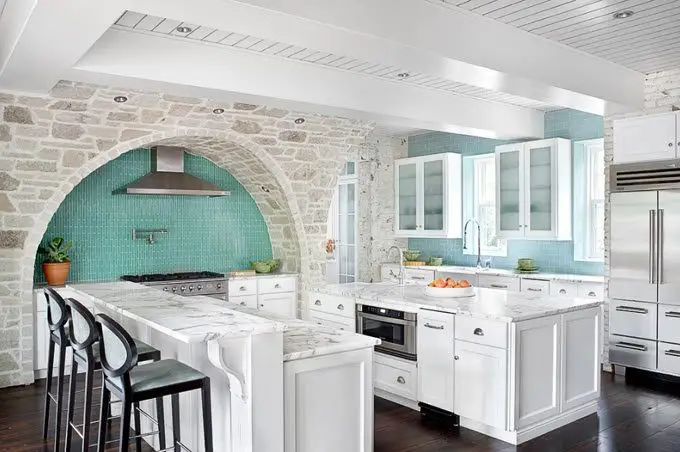How to Transform Your Interior Space with Simple Lines
August 31, 2023 | by cashsavvyconstruction.com

Introduction
When it comes to designing your interior space, there are many different elements to consider – from color schemes to furniture styles. However, one often overlooked aspect of interior design is the use of lines. The lines in your living space can have a profound impact on the overall aesthetic, creating a sense of movement and flow that can be transformative. By incorporating simple lines into your design, you can create a sense of harmony and balance that elevates your space to a whole new level. In this blog post, we’ll explore how you can use lines to create a beautiful and functional interior space.
We’ll cover everything from the basics of line design to more advanced techniques for creating a dynamic and engaging environment. Whether you’re a seasoned interior designer or someone who’s just starting out, this post will provide you with valuable insights and practical tips for transforming your home or office. So, if you’re ready to take your interior design skills to the next level, join us as we explore the power of lines in transforming your interior space.
Transforming Your Space
When we think of a line we get the idea of two points connecting in a solid or thin manner. A line can be horizontal, vertical, diagonal, or curved. Its direction can create an effect in a room. It can make a room appear taller or bring the ceiling lower. It also makes a room appear larger than it actually is. Line allows us to creates illusions. This is how you do it.
1. Define the purpose of the space.
Transforming your interior space with simple lines is a great way to achieve a modern and minimalist look that can enhance the overall functionality and appeal of your home. However, to achieve this, one must start by defining the purpose of the space. The purpose of a room will determine its layout, furniture, and decor. For instance, if you’re transforming a living room, its purpose might be to provide a comfortable and welcoming space for relaxation and entertainment.
2. Understand the principles of lines.
Understanding the principles of lines is a key aspect when transforming your interior space. Lines play a crucial role in design and can drastically alter the way a room is perceived. Lines are obvious along windows, plank paneling, textiles, doorways, arches, columns, wall coverings, flooring, and furnishing. By understanding the principles of lines and how they can be used in interior design, you can create a space that is visually stimulating and inviting.
One of the first principles to consider is the type of line you want to use. There are several types of lines, including vertical, horizontal, diagonal, and curved lines. Each type of line creates a unique effect in a room. For instance, vertical lines can make a room appear taller, while horizontal lines can make a room appear wider. Diagonal lines can add a sense of movement and energy to a space, while curved lines can soften the edges of a room and create a more organic feel.


Another principle to consider is the placement of lines. The way lines are arranged can make a significant impact on a room’s overall look and feel. For example, creating a grid-like pattern using horizontal and vertical lines can give a room a more structured and organized appearance. On the other hand, using diagonal lines in a haphazard fashion can create a more playful and dynamic atmosphere.
Also, the color and thickness of lines can enhance the overal aesthetic and mood of the space. Lines can be found in various elements of a room, such as wallpaper patterns, floor tiles, and furniture designs. Choosing the right color and thickness of these lines can enhance the overall aesthetic and mood of the space.
When decorating a room, the thickness of lines is an important aspect to consider as it can greatly impact the overall look and feel of the space. Thick lines can create a bold and dramatic effect, making a statement and drawing attention to certain elements within the room. This can be particularly effective in larger spaces where the décor needs to be more impactful in order to fill the room.
Also, thick lines can create a sense of compression and make a space feel more intimate and cozy. When choosing the thickness of lines to use in a room, it is important to consider the existing décor and the overall design scheme. Thick lines may not work well in a room with a lot of intricate details or patterns, as it can overwhelm the space. Similarly, thin lines may not be as effective in a room with large furniture pieces or bold colors.
On the other hand, thin lines can create a more delicate and subtle look, perfect for smaller spaces or for those who prefer a more understated style. The thickness of lines can also create an illusion of depth and dimension in a space. For example, using thin lines for a wall mural or wallpaper can create the illusion of depth, making the space feel larger and more open.
Lines in a room can also influence our mood or it could give us a feeling of movement. Lines that are jagged can give a room a feeling of fierceness. A room with many lines may appear busy, while a room with few lines may appear empty. But these lines do not have to be real. Lines could be implied between the two connecting points, like along surfaces.



The ceiling in the room below has solid and horizontal lines. Horizontal lines tend to move the eyes from side to side; this gives us a strong feeling. The ceiling in this room is made up of a wooden planks that are repeated horizontally in the ceiling. This combine with the thinner lines repeated throughout the room helps create an informal kitchen, and one that gives us a feeling that even men would like to cook in this kitchen. However, you should use strong horizontal lines to a minimum as they tend to create a feeling of restlessness.
Finally, we use lines to help us create a focal point and a sense of rhythm or pattern. So in your decorating and designing efforts, don’t forget what the element of lines can do for your room.


3. Always incorporate symmetry and balance.
Transforming a room can be an exciting and daunting task. One effective way to achieve balance and symmetry in a space is by incorporating lines. By using lines, you can create a sense of harmony and cohesion throughout the room.
One way to introduce lines into a space is through furniture placement. If you have a large room, consider dividing it into smaller areas using furniture. For example, you can create a conversation area with a sofa and two chairs, and a separate reading nook with a comfortable chair and a floor lamp. Also, positioning furniture in a straight line can create a sense of balance and symmetry in the room. For example, aligning the sofa, coffee table, and armchairs in a straight line can create a cohesive and visually pleasing effect.
Similarly, placing artwork or decorative items in a straight line on a wall can create a harmonious look. This will not only create a sense of balance but also provide functionality to the room. Consider hanging artwork or photos in a straight line to create a visual balance. You can also use shelves or a gallery wall to introduce lines into the room. When arranging items on shelves or a gallery wall, try to keep the spacing between each item consistent to maintain a sense of symmetry.


The use of rugs is also an effective way to introduce lines into a room. Placing a rug under a coffee table or dining table can create a sense of unity in the space. When choosing a rug, consider the lines in the pattern. A rug with straight lines can create a more modern and sleek look. Also, choose a rug or carpet with linear patterns or stripes to create a sense of length and direction in the room. This can also help to visually expand the space. Additionally, using a rug or carpet with a diagonal pattern can create a dynamic and interesting effect.
Lighting can also play a role in creating balance and symmetry with lines. Consider using linear pendant lights or chandeliers to add a sense of flow and direction to the room. Alternatively, using wall sconces in a straight line can create a cohesive look while providing ample lighting.


4. Experiment with lines
Transforming a room can be an exciting process, and one way to do it is by utilizing lines. Incorporating lines into a space can create depth, accentuate certain areas, and add a touch of style. The beauty of using lines is that there are endless possibilities, and it’s easy to experiment with different materials to achieve the desired effect. For example, using wallpaper with vertical lines can make the ceiling look higher, while horizontal lines can make a room look wider. Additionally, using wood paneling with diagonal lines can create a dynamic visual effect. Another way to play with lines is by experimenting with symmetry and asymmetry.
Symmetrical lines are balanced and create a sense of order in a room. Asymmetrical lines, on the other hand, can create a more eclectic and playful vibe. For instance, hanging a set of frames in a symmetrical pattern can create a sense of symmetry, while incorporating different sizes and shapes of frames in an asymmetrical pattern can create a more dynamic and whimsical effect. Mixing and matching different types of lines can also transform a space. Combining different types of lines, such as straight, curved, or zig-zag lines, can create a unique and interesting visual effect.
5. Don’t forget negative space.
As a designer, it is important to consider all aspects of composition when creating a visual piece. One aspect that is often overlooked is negative space. Negative space, also known as white space, is the area around and between design elements. It is just as important as the positive space, which is the area occupied by the design elements themselves. When designing, it is crucial to consider both positive and negative space in order to create a balanced and effective composition.
Using lines is another important aspect of design. Lines can be used to create movement, direction, and emphasis within a piece. However, it is also important to consider the negative space that lines create. For example, if lines are used too closely together, they can create a cluttered and overwhelming design. On the other hand, too much negative space can create a boring and unengaging design.
Conclusion
In conclusion, the transformative power of simple lines cannot be underestimated. By adding or subtracting lines, you can change the feeling and function of a space. Whether you are looking to create a modern and minimalist look or add some visual interest to a bland room, incorporating lines can make a big impact. With these tips and tricks, you can confidently experiment with lines to transform any space into a work of art. Remember, less is often more, and the power of simplicity should never be underestimated.
RELATED POSTS
View all


